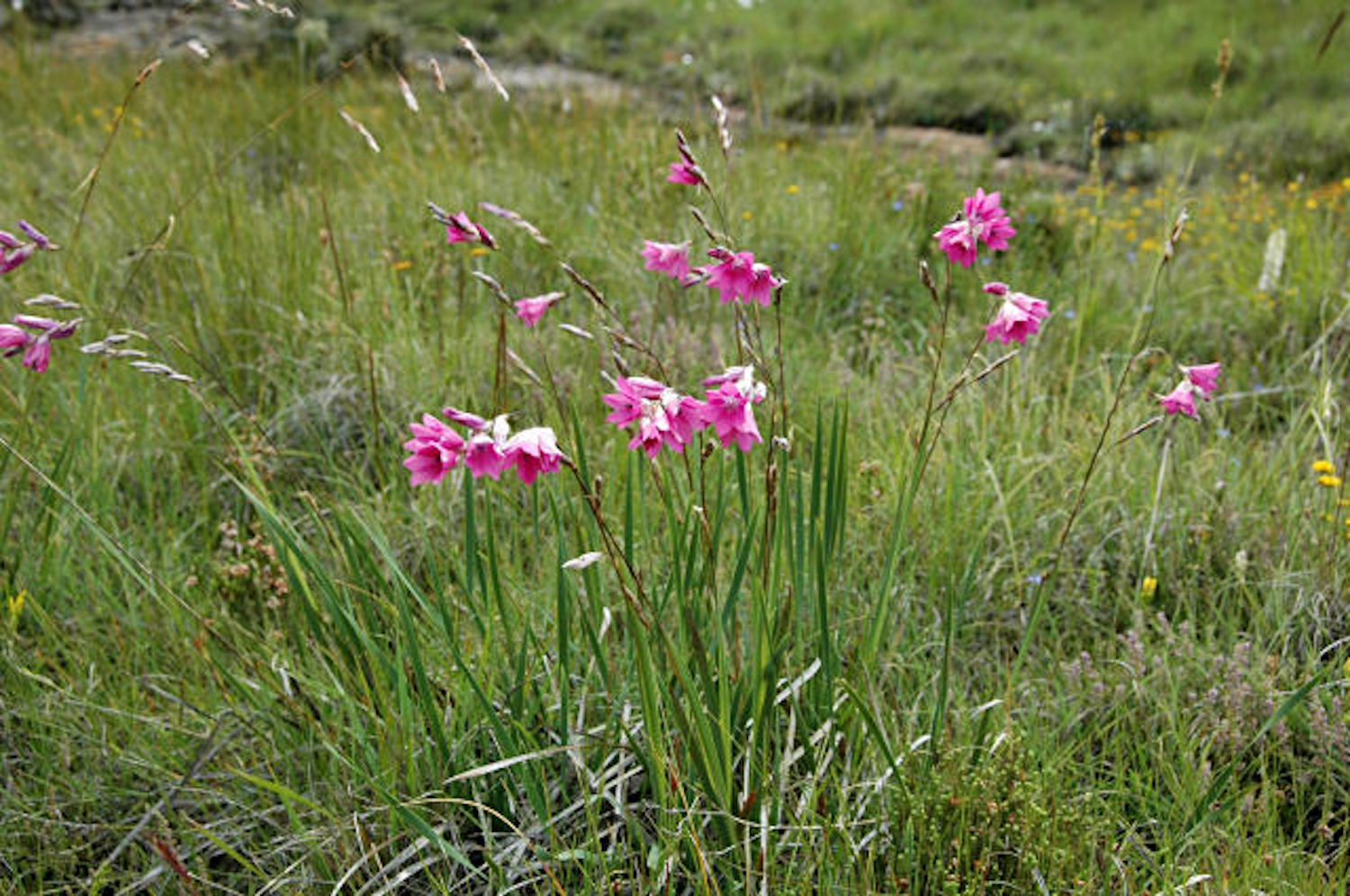Dierama trichorhizum
Approx. 0.5 litre pot
About this cultivar:
Dierama trichorhizum is a dwarf angels fishing rod with nodding flared pink bells in summer. It’s small size and tender evergreen nature makes it ideal for a pot, rock garden, or near a house. Native to alpine regions of South Africa it is not as hardy as other Dierama, so watch out. Cute!
- Position: Full sun, partial shade
- Soil: Almost any soil, grows well in Ballyrobert
- Flowers: June, July, August
- Other features:
- Hardiness: H3 - Hardy in coastal and relatively mild parts of the UK (-5 to 1°C)
- Habit: Bushy, clump forming
- Foliage: Evergreen
- Height: 15 - 45 cm (0.5 - 1.5 ft)
- Spread: 15 - 45cm (0 .5 - 1.5 ft)
- Time to full growth: 2 to 5 years
- Plant type: Herbaceous Perennial, grass like
- Colour: Green, pink
- Goes well with: Grasses, Iris, Nepeta, Lavendula
About this genus:
Dierama is a genus of flowering plants in the iris family (Iridaceae). Because they are so beautiful you would think the name comes from "to die for" but it is a bit more boring than that; it is derived from the Greek word Dierama, meaning "funnel", and alludes to the shape of the flower. Long known to gardeners, the species Dierama pendulum was first collected in 1772 by the Swedish naturalist Carl Peter Thunberg, although the genus Dierama was first established by the famous German botanist Karl Koch (1809-1879). Common names of various species include harebells, fairybells, wandflowers, and, of course, angels fishing rod.
Dierama are evergreen perennials growing from large, fibrous-coated corms. The inflorescence is a panicle of several spikes of flowers. The spikes may hang like bells or grow erect - however most gardeners are familiar with the hanging species like Dierama pendulum or Dierama pulcherrimum; most commonly known as angels fishing rod.
Most of the Dierama species we have are pendulum, pulcherrimum or some hybrid of them. We grow them almost everywhere in our garden at Ballyrobert and as the fishing-rod name would suggest, they do well in wet areas. However they don't like being moved around or being in pots. Full sun or part shade in fine, many are slow growing so be patient!
Good plant partners include their close cousin Iris and some grasses (in fact when it is not flowering many people confuse Dierama with a grass!). We also experiment with Nepeta and Lavendula.


